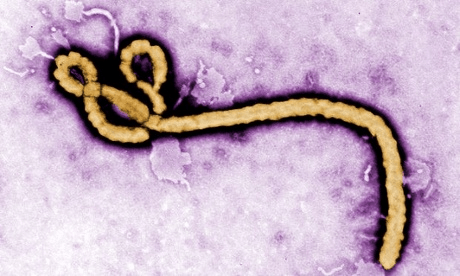Most of the news coverage of the current Ebola virus epidemic has neglected to inform the public of the causes and true dimensions of the threat this extremely nasty haemorrhagic disease poses. Ebolavirus is one of two genera in the “filovirus” family. The other genus, the marburgvirus, is indistinguishable from Ebola physically, and is also extremely virulent. Fortunately both are not transmitted easily, moving from person-to-person only by contact with bodily fluids. They are like diseases, such as AIDS, SARS, Lyme disease, and others that persist in animal reservoirs (where they may cause no symptoms) and can transfer into human populations when the conditions are “right.” They are “emergent” diseases, ones that are not known historically that are now invading or becoming potentially serious for an ever larger and more vulnerable human population. Ebola and Marburg, because of their very serious symptoms and high death rates, have often been considered potentially capable of causing a catastrophic world-wide epidemic (“pandemic”) affecting hundreds of millions or more, like the flu pandemic at the end of World War I.
The filoviruses are native to Africa, and inhabit non-human primates (don’t eat chimpanzee meat) and some bats, which may be the main natural reservoir. Those “right” conditions are directly related to human population size. The more people there are to come into contact with animal reservoirs, the more people there are in need of “bushmeat” to eat, the higher the odds of a virus transferring into the human population. Those odds are also increased by how many immune-compromised people are available which the virus may more readily invade – and today that number may be in the billions globally because of hunger, micronutrient deficiency, and the prevalence of AIDS. Furthermore, the size of human population necessary for a self-extinguishing disease to persist (that is, not die out because all susceptible individuals either die or survive and become immune) is another determinant of the possibility that a pandemic might be generated. And, needless to say, the existence of rapid global transport systems (especially airlines) certainly make any infectious disease more of global problem.
The current Ebola epidemic has already involved more than twice as many people as any previous one; at this writing it has invaded Nigeria, and seems to be spreading fast. A main danger is that the more people infected, the higher the chance that its mode of transmission may evolve. If it learns to move in droplets, Homo sapiens could be in deep trouble. In my view, this means that in the current emergency, the world should mobilize rapidly to send medical aid to isolate and treat victims in Africa. If that is successful, society should then put much more effort into preparedness, building the infrastructure (early warning systems, stocked drugs, isolation suits and facilities, etc.) and training people to use it. Then nations should promote educational programs for doctors and then general public that give much more attention to the relatively neglected topics of demography and evolution. These are important not from just the viewpoint of pandemics. Population growth is a major driver of virtually all dimensions of the human predicament, and ignorance of basic evolutionary theory is a major source of humanity’s insane and self-defeating patterns of antibiotic and pesticide use and its pervasive racism and sexism.
MAHB-UTS Blogs are a joint venture between the University of Technology Sydney and the Millennium Alliance for Humanity and the Biosphere. Questions should be directed to joan@mahbonline.org
MAHB Blog: https://mahb.stanford.edu/blog/ebola-population-and-evolution/
The views and opinions expressed through the MAHB Website are those of the contributing authors and do not necessarily reflect an official position of the MAHB. The MAHB aims to share a range of perspectives and welcomes the discussions that they prompt.
